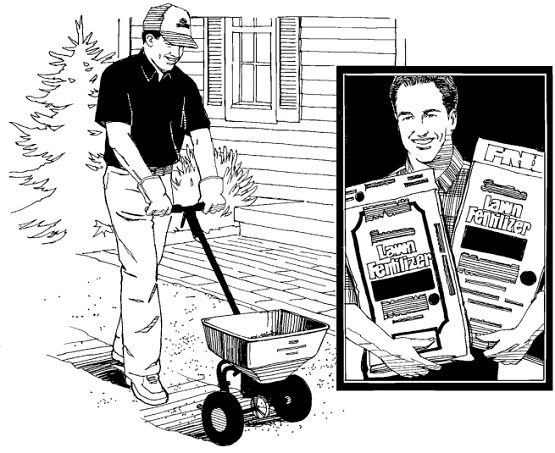
A common error when buying a chemical fertilizer is failure to read the label, not just what are the “fertilizer” elements (NPK) given on the front of the box or bag, but what other elements may be included. The “fertilizer” elements are given in percent of nitrogen (N), phosphorus (as the oxide, P2O5) and potassium (as the oxide, K2O) that appears on the label as numbers in that order, such as 5-10-15, 10-10-10, 6-9-6, etc. But there may be other ingredients included, such as one or more of the micronutrients, boron (B), copper (Cu), iron (Fe), manganese (Mn) and zinc (Zn). In addition, the fertilizer may also include calcium (Ca), magnesium (Mg) and sulfur (S). These additional elements are usually listed on the side or the back of the container. If any of these elements are guaranteed, the percentage amount will be given.
The label may give the source of the element(s), important information as chemical form can affect elemental solubility, and in turn, plant availability. The chemical form of N, for example as either urea [CO(NH2)2], nitrate (NO3), and/or ammonium (NH4), will affect N movement in the soil solution, potential N loss by volatilization, and ease of N adsorption by plant roots. The solubility of the P form in the fertilizer can affect the potential for soil fixation and long-term P availability. Another example of form that would affect potential plant availability is if the element is as a chelate or in a slow-release formulation.
Most chemical fertilizers are marketed based on their intended use, for lawns, vegetable gardens, plant beds or trees, or for a particular plant species, stage of plant growth (to stimulate vegetative or reproductive growth), or for a particular growing system (soil, soilless, hydroponic), or for general use. Some fertilizers may have a specific application, formulated for inclusion in irrigation water or as a foliar spray.
Some chemical fertilizers are sold under a brand name, such as Miracle Gro, Scott’s, Ultra-Green, Bayer Advanced, and Sta-Green products, with sub-names, such as “Bloombooster,” “All Purpose,” “Color Bloom,” fertilizers whose brand name identifies their use and/or for a particular plant species or group of specie types.
Another marketing gimmick is to add a suite of essential plant nutrient elements and then place on the package label, words such as “complete,” “ultimate,” or “improved.”
Recently, growers producing market-ready germanium plants from stem cuttings selected a fertilizer that was advertised as being “complete” since it contained a mix of micronutrients. Expecting more vigorous plant growth with the use of this “complete” fertilizer, they were surprised when black specks and small chlorotic areas began to appear on the maturing leaves, A leaf assay revealed an accumulation of excessive levels of Mn and Fe, elements that were in the fertilizer. Their fertilizer selection resulted in a total loss since the plants were not of suitable market quality.
For soils regularly fertilized with a general- or all-purpose fertilizer, the fertilizer elements, P, and possibly K, may eventually reach their sufficiency level in the soil. Adding an additional amount of either element will then lead to an excess that can adversely affect plant growth. Once an element is in “excess,” it is difficult to correct, leading to years of less-than-optimum plant growth.
To avoid over fertilizing a soil, have it tested, and then follow the soil test recommendation. A soil test will also determine if the soil pH is within the optimum range for the plants being, or to be grown, and if not, a lime recommendation will be given. The level of “availability” for most of the essential plant nutrient elements are pH sensitive, therefore, when outside the desired pH range can lead to plant nutrient element insufficiencies. For example, Mg deficiency can occur even if the soil test level for that element is “sufficient,” if the soil water pH is less than 5.4. Magnesium is a major essential element whose deficiency does not always appear visually on the older leaves of the plant, but will result in poor plant growth, and for fruiting plants, less than the expected yield.
So, before buying a chemical fertilizer, READ THE LABEL. Be sure what you are buying and don’t make the mistake that the geranium growers made, thinking that they were buying a fertilizer that would enhance their produced product, only to lose their entire crop.
J. Benton Jones, Jr. has a PhD in Agronomy and is the author of several books. Dr. Jones has written extensively on hydroponic growing and outdoor vegetable gardening employing sub-irrigation hydroponic growing systems.
Related Articles & Free Email Newsletter
Diluting Your Hydroponic Nutrient Solution May Lead to Better Yields
Soil Microorganisms – Friends and Foes




Comment here